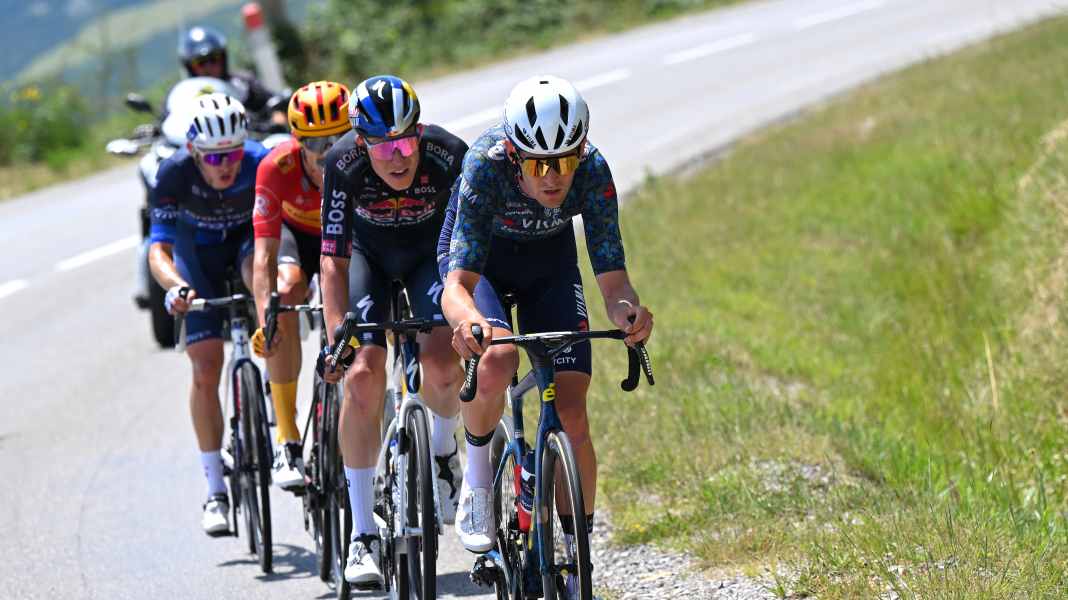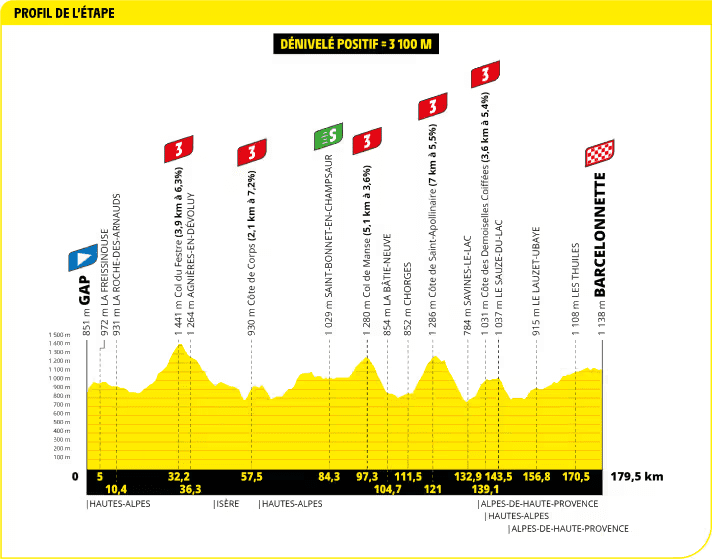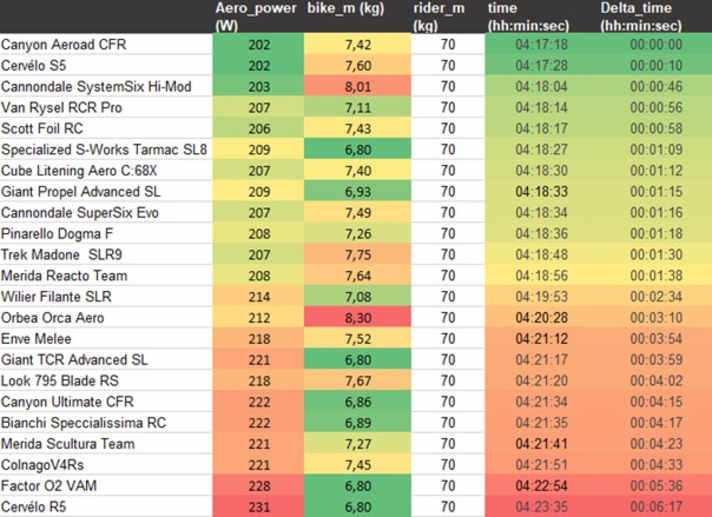
Tour de France 2024 - Stage 18: Gap - Barcelonnette | 179.5 Kilometers

The unorthodox route continues: the planners have also realized an atypical route profile on the 18th stage. There are five 3rd category climbs and a total of 3.100 meters of altitude to overcome. However, the finale is almost flat, the course climbs gently over the last 25 kilometers. The last kilometer in Barcelonnette also has a slight incline, with a bridge forming a chicane 250 meters before the finish. The planners are obviously not expecting a large peloton to sprint.
On paper, this is a stage for breakaways. The start ramp for the breakaway is the Col du Festre, 32.2 kilometers after the start. The undulating profile that follows is perfect for a breakaway. As always, however, it depends on the riding style of individual teams whether the opportunity for a breakaway actually arises. The battle for the green jersey could influence the stage.
The material for the route is clear. No matter whether sprinter, breakaway rider or control rider: the aero set-up is set. As usual, the riders will wear skin-tight one-piece suits, put high wheels on their bikes, go long and flat and compromise on weight by a few hundred grams. Aerodynamics are the key to the high speeds that the pros ride at. For this stage, we have broken down how the riding resistance is distributed on this undulating stage:
- Aerodynamic drag: 44%
- Mountain resistance: 42%
- Rolling resistance: 14%
In this overview, we have not included the low mechanical losses in the drivetrain (around 3 percent for the chain and bearings) and the acceleration work after slow bends. On this mountainous stage, aerodynamic resistance and mountain resistance are similarly distributed. If the stage is flat (1,000 meters of climbing over 180 km), the distribution changes to 66/17/17% aero/mountain/rolling resistance. If the rider is riding solo, the proportion of aerodynamic drag increases a little more.
The calculation is based on the assumption that six breakaway riders provide each other with slipstreaming on stage 18, which reduces the proportion of work against the airstream accordingly. The longer a rider rides alone at the front, the more the weighting shifts towards aerodynamic resistance - and the less likely it is that one rider will get away with it alone.
Number of the day: 6:17 minutes
The simulation for the 18th stage shows that the best possible bike aerodynamics give a 6:17 minute advantage over a light bike - even though more power is invested uphill than on the flat or downhill.
The (almost) entire field at a glance*

*) The calculations are based on the bikes tested by TOUR in the laboratory and wind tunnel. The bikes at the Tour de France may differ in some details. Of course, we have also not yet been able to examine last-minute prototypes. Background to the simulation.
Table: The ranking of the escape bikes on the 18th stage. Aerodynamics trumps lightweight construction - despite the 3.100 meters of altitude.
Our expert

Robert Kühnen studied mechanical engineering, writes for TOUR about technology and training topics and develops testing methods. Robert has been refining the simulation calculations for years, they are also used by professional teams.
